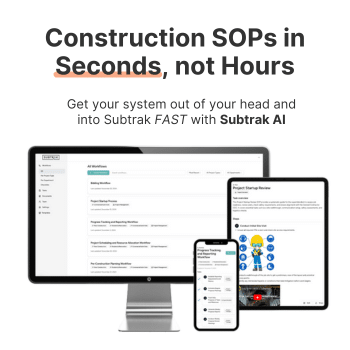SOP Templates > Painting > Pre-Construction > Material Procurement & Order Management
Material Procurement & Order Management
Review paint spec sheet and room schedule
List primers, topcoats, tape, and plastic
Check paint inventory and leftover supplies
Request price lists for coatings and materials
Ask about specialty coatings lead times
Choose paint vendor based on color match and quality
Order primer, finish, and prep items per zone
Record coating vendor and shipment dates
Schedule paint drop and jobsite access
Log paint order ETA and location
Inspect paint cans, colors, and batch codes
Report paint mismatch or damaged cans
Stage paint in climate-controlled space
Notify team of paint ETA and location
Reorder paint due to change or touch-up
👈 Use this SOP template inside Subtrak
Edit with AI. Customize in seconds. Store and share all your SOPs and checklists in one place.
